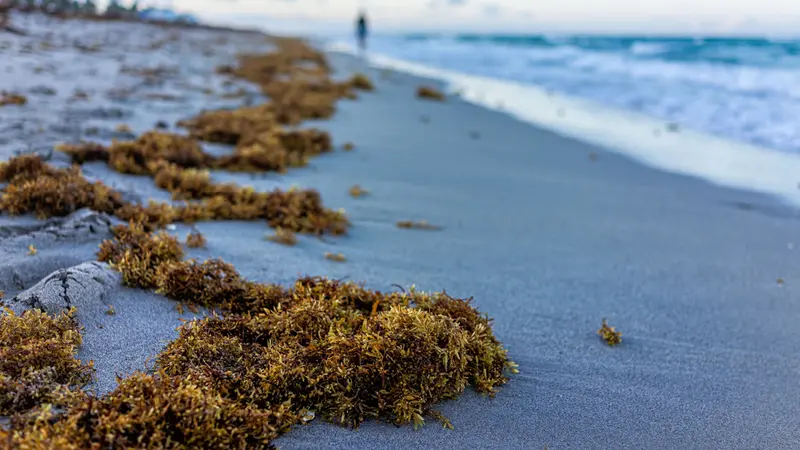

Industry News

Industry News
5,000-Mile Seaweed Belt Threatens Coastal Environment
A 5,000 mile bloom of brown algae stretching across the Atlantic Ocean is one of the largest on record, and is expected to grow and peak in June or July 2023.
The Great Atlantic Sargassum Belt is formed across the Atlantic Ocean each spring and summer by a type of algae that grows on the surface of the water and forms small clumps that move together to form larger clumps as the winds between South Africa and the Gulf of Mexico push them together. It weighs approximately 20 million tons and can be seen from space.
While the algae doesn’t threaten pose a threat in the ocean, as ocean currents push it toward the beaches and as it dies and rots, it brings a strong smell similar to rotten eggs, attracts insects and bacteria, degrades water quality, and deters tourists in Mexico and Florida. The beached algae can also destroy coastal ecosystems, suffocate coral, harm wildlife, threaten infrastructure, and decrease air quality.
Sargassum usually begins washing ashore in May, but has already begun to reach Florida beaches in March. The bloom has continued to grow larger over the past five years, and a 2019 study in the journal Science suggests that deforestation and fertilizer use along the Amazon River could be the culprits for the surge.
A team of researchers at University of South Florida College of Marine Science monitors and tracks sargassum blooms using satellites. The bloom has been observed in satellite imagery since 2011, often extending from West Africa to the Gulf of Mexico.
REFERENCES
University of South Florida College of Marine Science. (n.d.). Satellite-based sargassum watch system. Optical Oceanography Laboratory. https://optics.marine.usf.edu/projects/saws.html
van Hagen, I., et al. (2023, March 16). Images from space show a 5,000-mile bloom of seaweed threatening the beaches of Florida. Business Insider. https://www.businessinsider.com/massive-seaweed-bloom-floating-atlantic-one-largest-on-record-2023-3
Wang, M., et al. (2019, July 5). The great Atlantic Sargassum belt. Science. https://www.science.org/doi/10.1126/science.aaw7912


 By
By







